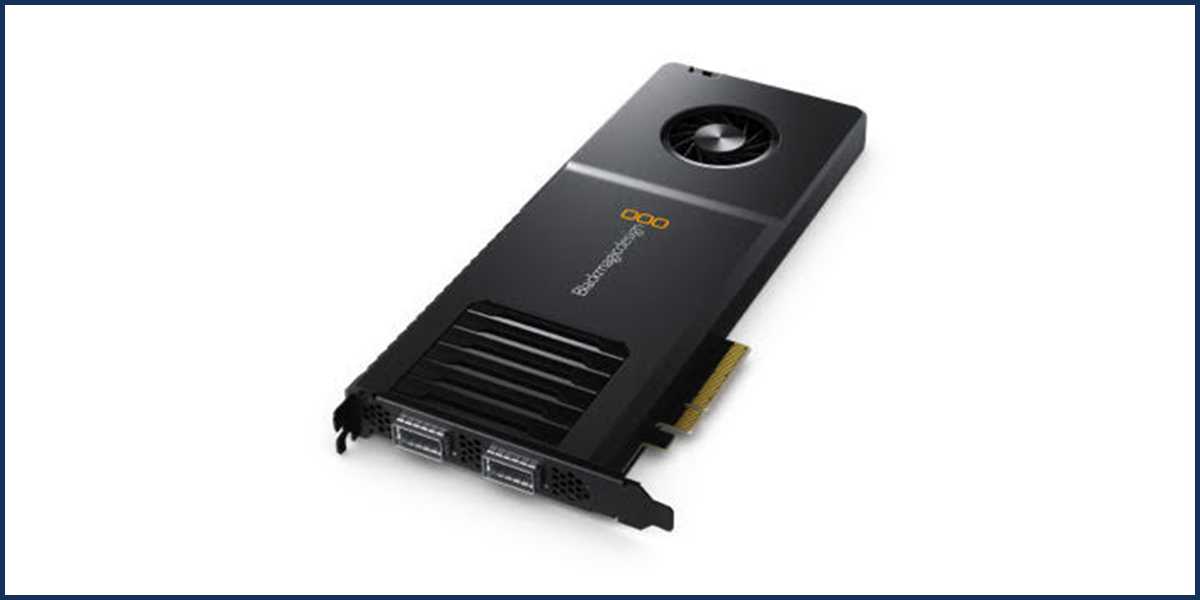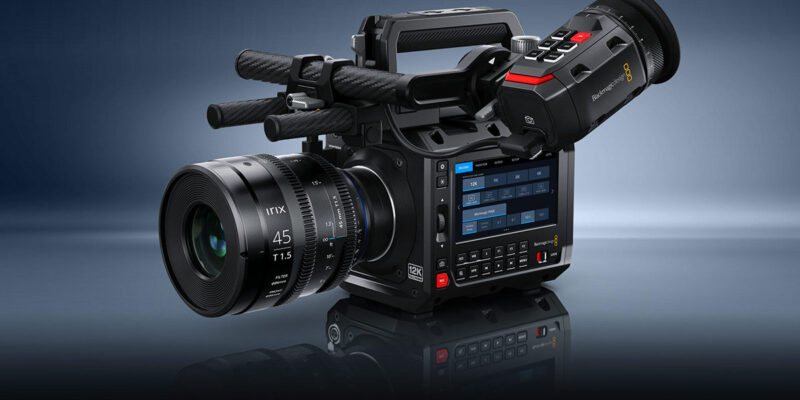Blackmagic Design Releases DeckLink IP 100G; a PCIe Gen 4 Card That Uses ST 2110 to Capture 8 Channels of HD and 4K

Blackmagic Design announced DeckLink IP 100G, a new PCIe Gen 4 card that can capture and play back up to eight channels of HD and Ultra HD video simultaneously into 2110 IP systems. It includes 2 x 100G Ethernet QSFP ports for redundancy or connection to two separate 100G Ethernet switches, as well as built-in cooling. DeckLink IP 100G also supports GPUDirect RDMA for direct memory transfers between DeckLink and GPUs, reducing PCIe bandwidth when processing video on GPUs and significantly lowering latency. DeckLink IP 100G will be available in July from Blackmagic Design resellers worldwide for US$1,795.
DeckLink IP cards conform to the SMPTE ST 2110 standard for IP video, which specifies the transport, synchronization, and description of video, audio, and ancillary data over managed IP networks for broadcast. It also keeps video sources in sync using a common PTP clock. DeckLink IP supports SMPTE 2110-20 uncompressed video, SMPTE 2110-21 traffic shaping/timing, SMPTE 2110-30 audio, and SMPTE 2110-40 for ancillary data. The key advantage of SMPTE 2110 is that video, audio, and ancillary data are transported independently over the network.
DeckLink IP connections are multi-rate, supporting all SD, HD, and Ultra HD formats, depending on the model. In standard definition, DeckLink IP supports both 525i59.94 and 625i50. In HD, all DeckLink IP cards support 720p, 1080i, and 1080p standards up to 1080p60. In Ultra HD, customers get support for all standards up to 2160p60. Video standards can be set independently for each channel and switch instantly via the default video standard setting in the Desktop Video Utility or directly via the DeckLink SDK.
DeckLink IP cards are designed to support the highest-quality video. Customers get support for capture and playback to popular formats such as Apple ProRes, DNxHD, or even 10-bit uncompressed, so users are never locked into a single file format. 10-bit is the most commonly used television standard, as it represents color with four times the precision of 8-bit video. Working with 10-bit uncompressed video ensures that images are a perfect pixel-for-pixel clone of the original source, providing the sharpest green screen keying, seamless VFX compositions, and superior color correction.





